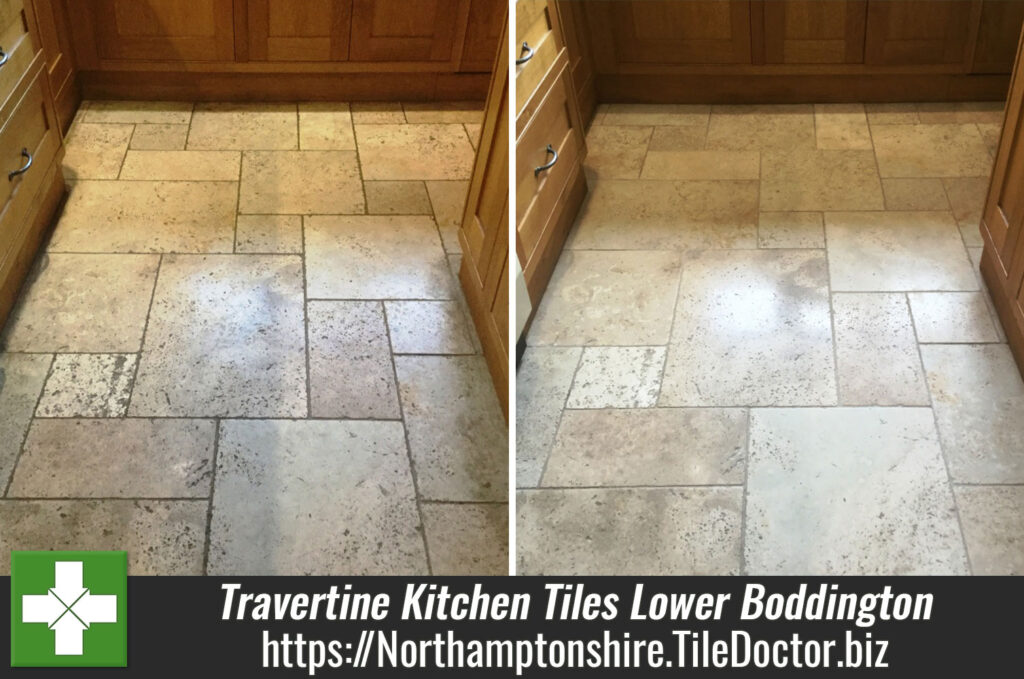Some of the world’s best-known Travertine quarries are found in Italy. In fact, the curved columns of the Vatican City are made from Travertine. But the stone is popularly used for flooring in many other countries, including the UK. It’s a form of Limestone which is quite soft and porous, but has unique aesthetic characteristics, including natural pits and voids.
The natural process of corrosion, known as pitting, makes it so that without the right maintenance and adequate sealer, Travertine is very difficult to clean. The small holes that form in the stone can quickly become ingrained with dirt and other muck. Making things worse, many modern cleaning products are not suitable for use on Travertine: they are acidic and over time will cause further corrosion to occur.
Recently, I was called to a property in the quaint Northamptonshire village of Lower Boddington to rejuvenate a tumbled Travertine tiled kitchen floor. The house was a very busy one, with children and dogs running around. Needless to the say the tiles were looking worse for well and were in desperate of restoration, including cleaning, polishing and sealing to brighten the appearance of the floor and protect it from everyday stains and foot traffic.
 |
 |
Cleaning and Polishing Tumbled Travertine Kitchen Tiles
The first thing I needed to do was to remove the plinths from the kitchen units and cover the base units and appliances with a protective film to prevent them from encountering the cleaning products.
Next, I began the process we know as burnishing, which involves the application of diamond encrusted burnishing pads to the tiles to resurface and polish them. In the Tile Doctor system, there are four such pads, each possessing a different level of grit. These pads are fitted to a rotary scrubbing machine and then applied sequentially, starting with the Coarse pad, before moving through to the Medium, Fine, and Very Fine.
A small amount of water is used as lubrication with each pad and I stopped in this case between the application of each pad to soak up any excess moisture using a wet vacuum. The result after completing the burnishing process is a very refined and high-quality polished finish.
After burnishing the tiles, I followed by cleaning the grout lines carefully using a combination of handheld brushes and Tile Doctor Pro Clean, which is an alkaline-based tile and grout cleaner.
Sealing Tumbled Travertine Kitchen Tiles
I left to the floor to dry out completely overnight and would return the following day to carry out a final polish of the tiles and to seal the stone. I did this using two coats of Tile Doctor Ultra-Seal, which is a natural-look, impregnating sealer designed to provide maximum protection. You can see the fantastic results in the photos below.
 |
 |
Before leaving my very happy customer to the enjoy, I left her with customer with a complimentary bottle of Tile Doctor Stone Soap, a neutral and highly reliable cleaner for natural stone floors such as Travertine. This will assist her in maintaining the appearance and condition of the tiles going forward. Another satisfied customer!


When cleaning floors with a Mop we recommend using two buckets, one containing a neutral PH cleaning fluid such as Tile Doctor Neutral Cleaner and the second where you rinse your mop afterwards, otherwise you will contaminate your cleaning fluid with dirt.